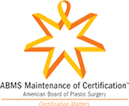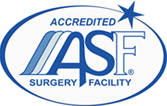Posted: July 13, 2010
The skin has two very important proteins: collagen and elastin.
Elastin is the protein that gives skin elasticity, its tone or tautness and its resistance to stretching. Unfortunately, we lose elastin with aging, sun exposure, poor diet and exposure to toxins, like cigarette smoking. The loss of elasticity contributes to skin hanging loosely when we bend over and the bunching of skin when we drop our chin or bend at the waist. It can also be part of the reason for there being extra skin after pregnancy or weight loss.
Although we have surgical procedures that can cut away extra skin, we have no treatments that can restore elastin: we can get rid of the extra skin, but we can’t restore the skin’s resistance to stretch, or improve laxity due to loss of tone.
This lack of laxity is why skin does relax after surgery, no matter how tight your Denver plastic surgeon may pull it. For example, when we do abdominoplasty (tummy tuck), we pull the skin so tight that people can’t stand straight for almost 2 weeks after surgery. Yet, after 6 months, people notice some folds of skin when they sit or bend over, although there is no extra skin when standing straight. Similarly, after facelift, the skin is pulled so there is no laxity at the jowls or neck, even when you drop your chin. The skin gradually relaxes to its resting tone and may not be able to maintain all of the tightness created by the surgery, so when you drop your chin, you see some folds or relaxation of the skin.
Collagen is the structural protein, the building block of the skin. Collagen gives our skin thickness. As we age, our skin gets thinner because we have less collagen. When we are young, our collagen lines up in layers of nice thick strands: our skin looks plump and smooth. As we age, the collagen bundles are thinner and in disarray, giving us thinner, wrinkly skin.
In the face, we see a loss of volume with aging: the skin gets thinner due to the loss of collagen, some of the facial muscles get thinner, and the fat decreases, especially around the cheeks, cheekbones and lips. Coupled with the loss of elasticity, this deflation of the face causes much of what we see with the aging of the face: the flattening of the cheek mound and formation of the tear trough or hollow under the eyes make the “bags” under the eyes appear even worse. This deflated skin of the mid-face droops, adding to the deflation around the mouth, causing the nasolabial folds (the folds or creases that form a line between the nose and the corners of the mouth) and the jowls, the pouching of skin and fat along the jaw line.
The lips develop lines because the thinner less elastic skin creases from the underlying action of the lip muscles when we pucker or purse our lips. The shapes of the lips change, too: the upper lip gets thinner and longer; we lose the Cupid’s bow and the curve of the lip’s profile. We see less of our upper teeth when we smile.
The neck cords (“turkey neck”) result from the same aging changes. The fat and the skin of the neck gets thin enough to see the edges of the underlying neck muscle, the platysma, which has relaxed and has lost enough tone to hang down. (Unfortunately, attempts to exercise this muscle to prevent the cords do not seem to be adequate to preventing cords).
Another aspect of the aging changes of the skin has to do with its texture and color. As our skin ages, the skin cells grow and replenish more slowly and the blood flow is less vigorous. The protective dead cell layer on the surface of the skin gets too thick creating a rougher appearance and a flatter color that looks dull, gray or yellow, rather than bright, smooth and pink. This is why you have heard of the importance of exfoliation, the term we use to describe removing the excess dead cell layer.
For those in Colorado, skin care devices and products are available for purchase at our office. For gentle and effective exfoliation, cleansing the skin, and stimulating blood flow to the skin try the Clarisonic.
We are privileged to have available many Colorado skin care products that can slow and even reverse some of these aging changes. Antioxidants like Vitamins A, C, and E repair damaged aging skin. Though not a replacement for proper sun protection, Vitamin C has been shown to repair sun damage, even as it is happening! Other products aid exfoliation and the turnover of skin cells (alpha-hydroxy’s), and stimulate the blood flow to the skin (niacin). Other products can be used to help even out pigment changes (hydroquinones).
In conclusion, the ideal facial rejuvenation process starts with prevention and continues with regularmaintenance.





